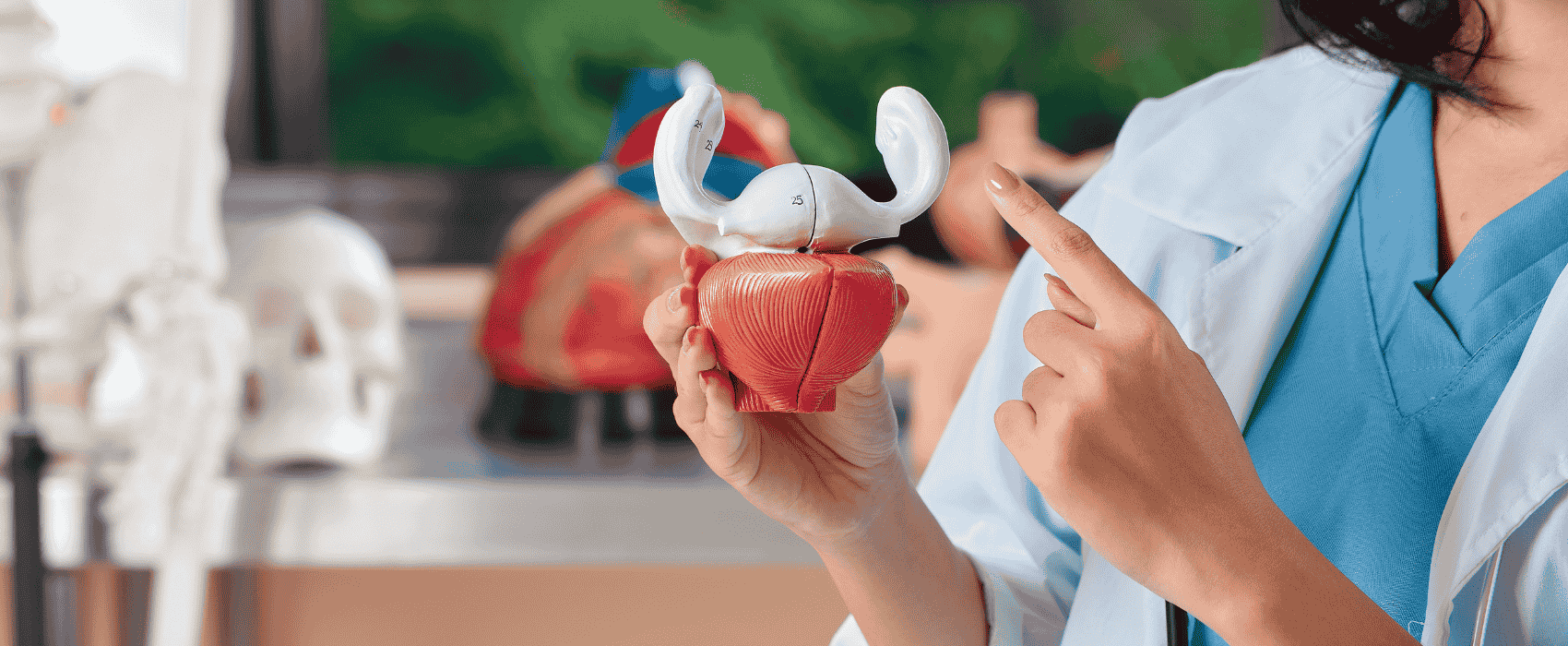
When it comes to urologic health, two common conditions often cause distress among individuals: stress incontinence and urge incontinence. Both conditions can significantly impact one's quality of life, but they have distinct characteristics and require different approaches for management and treatment. Here, we'll explore the intricacies of stress and urge incontinence, shedding light on their symptoms, causes, and effective treatment options.
What is Urinary Incontinence?
The process of urination requires the activation of several different muscles throughout your body. Bladder control also relies on the nerves in the bladder muscle and the surrounding structures, which indicate a need to urinate once the bladder is full. While the urinary tract is usually quite good at regulating all of this on its own, sometimes, issues can arise, and incontinence occurs.
Urinary incontinence (UI) refers to the involuntary loss of urine. It's a prevalent issue that affects millions of people worldwide. UI can manifest in various forms and be caused by several different factors. Although it can seem like a minor issue at first, even small urine leaks or accidents can drastically affect your mental health. Luckily, there are several effective treatment options available—from lifestyle changes to medications. That's why it's so important to seek treatment at the first sign of an issue.
What is Stress Incontinence?
Stress incontinence is a specific type of UI characterized by the involuntary leakage of urine during activities that put pressure on the bladder. It's not typically associated with a strong and sudden urge to urinate. Instead, it occurs when there is increased abdominal pressure, such as during sneezing, laughing, coughing, bending over, lifting heavy objects, or general physical activity. Urine leakage during these instances is the main symptom of stress incontinence.
It's mostly caused by weakened muscles around the urethra, which make your bladder more likely to leak urine. This is more common in women, especially following childbirth or menopause. The physical stress of pregnancy and childbirth can put a lot of pressure on the bladder, which can affect the muscles and nerves. However, this also applies to anyone who is overweight—both men and women.
Additionally, stress incontinence can be caused by abdominal pressure that effectively disengages the pelvic floor muscles that support the bladder and urethra.
What is Urge Incontinence?
Another common type of UI is called urge incontinence. Unlike stress urinary incontinence, urge incontinence is characterized by a sudden and intense urge to urinate, often followed by involuntary urine leakage. The urgency associated with this type of incontinence can be disruptive to daily life and may lead to frequent, unplanned bathroom visits.
Is Urge Incontinence the Same as Overactive Bladder?
While urgency incontinence and overactive bladder share similarities, they are not technically synonymous. Overactive bladder (OAB) refers to a set of symptoms, including a frequent need to urinate, urgency, and sometimes urge incontinence. Urge incontinence, on its own, is the medical term for feeling the urge to urinate suddenly and intensely. It's not technically a condition on its own, while OAB is. The cause of your incontinence may be due to lifestyle habits, pregnancy, childbirth, or improper diet and fluid intake. However, urge incontinence may also be a symptom of an overactive bladder.
Causes of Overactive Bladder
Overactive bladder is a urological condition but not necessarily a disease. It encompasses a range of symptoms of the urinary system that can occur in varying severity and frequency over time. While most of the causes of OAB are related to unhealthy lifestyle choices, certain medical causes can result in its onset as well. Some of the most common include:
- Multiple sclerosis (MS)
- Diabetes
- Kidney disease
- Parkinson’s disease
- Stroke
- Neurological disorders
- Neurogenic bladder
- Nerve damage
- Spinal cord injuries
- Infection
- Urinary tract infection
- Hormonal changes
- Bladder abnormalities
- Bladder obstructions
- Medication
- Declining cognitive function
- Obesity
- Difficulty walking
- Urinary retention
- Weakened pelvic floor muscles
- Benign prostatic hyperplasia (enlarged prostate)
As you get older, it's important to see your doctor regularly to undergo the necessary tests and ensure you're taking care of yourself. While incontinence can occur for several reasons, you may suffer from a condition that causes it.
Treatments for Incontinence
Luckily, there are several different treatment options for all types of incontinence. After your urologist administers tests to evaluate and identify which type you have, you'll be provided with a customized treatment plan to help reduce the loss of bladder control and take back your life. Some of the most effective treatments include:
- Reduce caffeine intake — Caffeine is known to irritate the bladder and can exacerbate symptoms of urge incontinence.
- Maintain a healthy weight — Excess weight can put additional pressure on the bladder and exacerbate stress and urge incontinence.
- Perform pelvic floor exercises — Regular pelvic floor exercises, such as Kegels, can improve muscle tone and reduce symptoms of the main types of incontinence.
- Bladder training — Bladder training involves scheduled bathroom visits to increase the time between urination gradually. This technique helps individuals gain better control over their bladder and reduce the frequency of urges.
- Nerve stimulation — Nerve stimulation therapies, such as sacral neuromodulation, can be effective for managing urge incontinence. These therapies involve modulating the nerves that control bladder function.
- Urethral bulking agents — Urethral bulking agents are substances injected into the tissues surrounding the urethra to provide support and reduce leakage. This minimally invasive procedure is often considered for those with mild to moderate stress incontinence.
- Botox injections — In certain cases, Botox injections into the bladder muscle can help alleviate symptoms of urge incontinence by relaxing the overactive muscles.
- Pessaries — For some individuals, pessaries – devices placed into the vagina to support the bladder – can be helpful in managing stress incontinence.
- Colposuspension — Colposuspension is a surgical procedure that involves lifting and supporting the neck of the bladder to improve continence. It is typically recommended for cases where conservative measures have proven ineffective.
- Sling surgery — Sling surgery is a common and effective surgical intervention for stress incontinence. It involves placing a sling or mesh under the urethra or bladder neck to provide support and prevent leakage during moments of increased pressure.
- Vaginal mesh surgery — Vaginal mesh surgery is another surgical option that aims to provide additional support to the pelvic organs and tissues. However, it is essential to note that the use of vaginal mesh has been a topic of debate due to associated risks and complications.
- Artificial urinary sphincter — For more severe cases of stress incontinence, an artificial urinary sphincter may be considered. This device is surgically implanted to mimic the function of a natural sphincter, allowing the individual better control over urine flow.
- Medications — Certain medications may be prescribed to manage stress incontinence. These can include alpha-adrenergic agonists to tighten the muscles at the bladder neck and increase resistance to urine flow or topical estrogen therapy to improve tissue integrity in postmenopausal women.
Other Types of Incontinence
In addition to the two most common types of urinary incontinence, individuals can experience the following:
- Mixed Incontinence — Mixed incontinence refers to a combination of stress and urge incontinence symptoms. Individuals with mixed incontinence experience both the leakage associated with increased abdominal pressure and the sudden urgency to urinate.
- Overflow Incontinence — Overflow incontinence occurs when the bladder doesn't empty properly, leading to constant dribbling or leakage. This type of incontinence is often associated with an inability to fully empty the bladder due to obstructions or nerve damage.
- Functional Incontinence — Functional incontinence is unrelated to bladder or urinary tract issues but is instead associated with physical or cognitive impairments that hinder an individual's ability to reach the bathroom in time.
How to Tell the Difference Between Different Types of Incontinence
It can be difficult to determine if you have stress incontinence, urge incontinence, or a combination of both types. Therefore, the best way to understand what you're dealing with is to work with your doctor so they can evaluate and identify your condition properly. Your doctor may also ask you questions about your medical history, family health history, and more. It's important to answer questions honestly and to the best of your ability to help ensure an accurate diagnosis. After diagnosis, your doctor will offer customized treatments to address your symptoms or manage any underlying conditions—thus giving you back control of your life.
If you or a loved one is experiencing incontinence, it's important to seek help from your healthcare provider. With the right guidance and treatments, there's hope for improved bladder control and a better quality of life.
Byram Healthcare is committed to providing support, information, and solutions for individuals with urologic issues. We understand the challenges of these conditions and strive to empower our customers with the knowledge and resources they need to manage their health effectively. To help manage symptoms of urinary incontinence or other bladder problems, browse our urology product catalog today.




